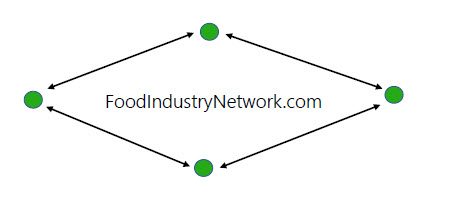Crops want in on tax credit

Glacier FarmMedia – Canola and soybean growers are lobbying to have their crops recognized as eligible feedstocks for the new sustainable aviation fuel (SAF) tax credit in the United States.
Read Also

Understanding El Niño and La Niña
Glacier FarmMedia – We are into an El Niño period and there is high probability it will continue through the…
The credit is contained in the Inflation Reduction Act signed into law by U.S. President Joe Biden last year.
Why it matters: Oilseed producers are lobbying the U.S. government to update regulations that would recognize crops for the sustainable aviation fuel tax credit.
The value of that credit will be determined by the carbon intensity of the fuel, which depends on the method used for measuring greenhouse gas emissions.
The act provides the option of using the International Civil Aviation Organization (ICAO) model or a “similar methodology.”
“There’s a lot at stake here,” said Chris Vervaet, executive director of the Canadian Oilseed Processors Association.
The U.S. government has established a target of three billion gallons (11.36 billion litres) of SAF production by 2030. That would be half of the clean fuel industry’s total projected production of biodiesel, renewable diesel and SAF fuel by the end of the decade.
“The potential market is enormous,” said Vervaet.
U.S. biofuel producers have already announced plans to ramp up production of SAF to one billion gallons (3.79 billion litres) in the next three years, a US$3.8 billion investment.
U.S. oilseed processors have committed another $6 billion to expand or build new capacity in 10 states.
Canadian canola crushers have followed suit, announcing a further 7.5 million tonnes of planned canola crush capacity north of the border.
But none of that capacity on either side of the border will be used to create feedstock for the SAF industry if the U.S. government sticks with the ICAO model for assessing GHG emissions.
That is why the American Soybean Association, the U.S. Canola Association, the National Oilseed Processors Association and Clean Fuels Alliance America recently sent a letter to John Podesta, senior adviser to Biden for clean energy innovation and implementation.
“The ICAO model uses old, inaccurate farming practices data that would effectively prevent sustainable aviation fuels made from crops such as soybean and canola oil from qualifying for the credit,” the groups said in their letter.
“It’s inconceivable that Congress would create, or Treasury would implement, a clean energy incentive that would rely solely on an outdated UN model that arbitrarily discriminates against U.S. farmers and their feedstocks.”
They are urging the administration to “explicitly recognize” Argonne National Laboratory’s Greenhouse Gases, Regulated Emissions and Energy Use in Transportation (GREET) model as the “similar methodology” option for determining SAF credit eligibility.
Vervaet said Canada’s processors are on board with that proposal because the GREET model recognizes modern farming practices like minimum- and no-till seeding.
“It’s a model that was developed by the U.S. government,” he said. “It’s right there. Why not use it?”
He wonders how the U.S. government will achieve its ambitious SAF 2030 production target without the use of canola and soybean oil.
Research is being conducted on future feedstocks made from things like biomass, but that is a long way off. For the “here and now,” canola and soybean oils are two obvious and abundant feedstocks.
One other option is used cooking oil. Clean Fuels Alliance America recently released a study showing that global supplies of the product could increase to 10 billion gallons by 2030, up from 3.7 billion gallons in 2022.
But Vervaet said used cooking oil is difficult to collect, gather and transport, and shipping the product from China to be used in North America’s SAF industry is not environmentally friendly.
The U.S. corn ethanol industry is also eying the SAF opportunity, according to National Corn Growers Association president Harold Wolle.
“If we work to get our carbon scores for our ethanol plants and our farms down, we will have ethanol with a low enough carbon score that it will be possible to do ‘ethanol-to-jet,’” he said during a recent introductory press conference with reporters.
“That’s a phrase you’re going to hear a lot more in the future.”
– This article was originally published at The Western Producer.
Source: Farmtario.com

